Guinea pigs are foragers by nature and they can savor a wide variety of plants, shrubs, herbs, and more. So, it is crucial to ensure that your yard doesn’t have plants that can harm your guinea pigs. Some plants can even be toxic to your guinea pigs.
As guinea pigs have an excellent sense of smell, any strong aroma plant can be harmful to our guinea pigs. Plants like marigold, salvia, catnip have a strong fragrance, which is terrible for our guinea pigs. Other plants like peppers, potatoes, wormwood, etc. have poisonous leaves and stems, which can be fatal.
We must be careful with what our guinea pigs ingest as they cannot vomit. Thus, anything they eat needs to pass through their digestive system, which can be a problem if the food was toxic for them.
17 Plants that are poisonous for guinea pigs
Here is a brief description of 17 plants that are commonly found in our yard and carry some potential hazard for our guinea pigs.
Sweet Alyssum
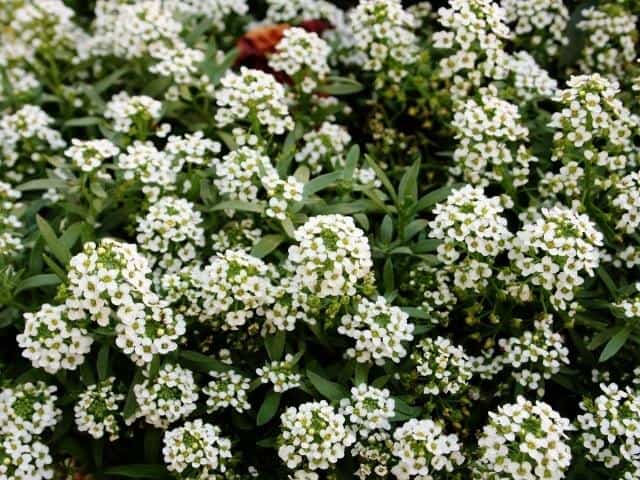
Alyssum is a beautiful flowering plant. It generated from the greek word “Alyssos.” The meaning of “Alyssos” is curing madness.
Alyssum flowers can be get eaten as they are edible. They are sweet and peppery in taste. They grow in spring, fall, and winter.
Alyssum is an annual and perennial plant. They have small white flowers that come in lavender, pink, and purple colors. Their stalks can grow up to one foot.
They are beneficial as they contain essential nutrients that prevent kidney problems and are also used to treat edema and ascites. They also work as a diuretic to prevent excessive water conservation in the body.
But this beneficial plant can be bad for guinea pigs as they can cause allergic reactions. They can also cause skin irritation, nausea, and breathing difficulty in guinea pigs.
Crown of Thorns
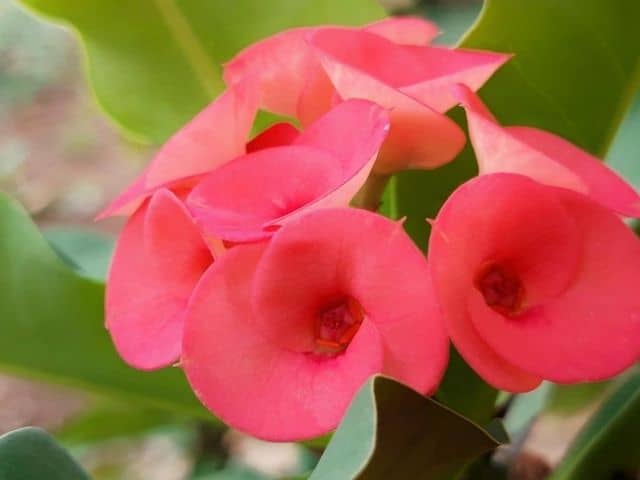
The scientific name of the crown of thorns is Euphoria milii. It is a cactus-like plant that is native to Madagascar. They are a woody, succulent, and cactus-like plant.
It comes up with bright green leaves, flowers subtended by red and yellow bracts, and thick sharp black horns. Its horns are used to cover its water-storing branches and stems.
It is also known as christ plant because of the belief that the crown of thorns worn by Jesus Christ is made from the stems of this plant.
The crown of thorns is considered as an ideal house plant. But you need to be cautious while growing them in your house as they are poisonous to guinea pigs and humans.
These plants contain a white milky sap that generates latex. Latex can cause sneezing, wheezing, breathing problems, and irritating ingestion, leading to gastrointestinal issues.
The Crown of thorns also has a toxic chemical present in it, which is known as Phorbol esters. It contains carcinogenic properties in them which contribute to tumor generation in guinea pigs body. Always keep your guinea pigs away from the crown of thorns.
Shirley Poppy
Shirley poppy is also known as Papaver rhoeas. It is named after an area of Croydon, which is in Surrey, a part of Greater London.
Shirley poppy is an annual flower that belongs to the poppy family. Shirley poppies are garden flowers. They grow up to 3 feet. Their flowers can grow up to two to four inches. Shirley poppies have straight stems, and they are heat intolerant.
Shirley poppies can grow in a garden. They contribute to many health benefits for humans. They help in breathing problems, cough and cold, sleep disorder, and pain.
Though they are beneficial in some nature, they are poisonous to your guinea pigs. It contains rhoeadine alkaloids. Alkaloids present in flower can cause diarrhea, bone marrow suppression, and liver behavior abnormality in your guinea pigs.
Ingestion of this plant also causes unconsciousness, restlessness, nausea.
It is highly recommended to keep your guinea pigs away from this plant.
If you cultivate this plant, always remember to improve it in an area where your guinea pigs cannot go because guinea pigs are attracted to fresh hay and flowers.
Ageratum
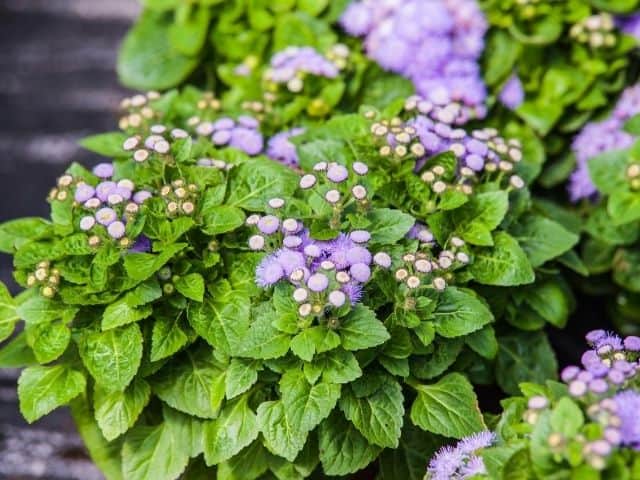
Ageratum is the most common plant among all the ageratum varieties. Their scientific name is Ageratum houstonianum. They are a native of Mexico.
Ageratum is mostly known for its whimsical pompom shaped flowers colored in blue, although other than blue, they come in many colors like white, pink, lavender, red.
Their blooming time is from spring to winter. They can be grown from four to thirty-six inches tall and six to eight inches wide.
They are bad for our guinea pigs as they are consist of some toxic components. It has a pyrrolizidine alkaloids present in it. Pyrrolizidine alkaloids cause liver damage and many other health problems such as lung disease and liver cancer risk for your guinea pigs.
Whenever your guinea pigs are roaming around the garden, always keep them away from this plant.
Strawflower
Strawflowers are annual flowers belong to the Gnaphalieae group. These flowers are referred to as paper daisy, golden everlasting, everlasting flower, and everlasting daisy.
Strawflowers have crisp and petal-like bracts. They have tiny florets that match with their bracts. It grow up to three inches. They are native to Australia.
They come in orange, pink, purple, white, and yellow colors. Strawflowers can be allergic to guinea pigs, and they can cause allergic dermatitis problems to guinea pigs.
Lantana

Lantana is a beautiful plant because of its vines. They are referred to as shrubs. Lantana can grow in a garden and also in pots. They are annual flowers, and they are native to the tropical regions of America and Africa.
It can grow up to six feet long and eight feet wide. They come in blue, red, orange, white, and yellow colors. Lantana consists of blooms that are arranged in a sphere to make it look beautiful.
These beautiful plants are harmful to guinea pigs as they have toxic elements present in them. Lantana causes irritation, respiratory problems, diarrhea, and several other health problems.
Guinea pigs like to forage and eat. If you allow your guinea pigs to forage, keep a strict eye on them so that they don’t go near this harmful plant.
Potato leaves
Potato is a tasty underground vegetable. Humans consume them because of their nutritious content and excellent taste.
Potato leaves are edible. They are sweet. Potato leaves are packed with nutrients like vitamin C, vitamin A, folic acid, and other nutrients.
They contain the right amount of nutrients in them, but they are also harmful to our guinea pigs because they also contain a compound that is toxic for them.
Potato leaves produce solanine. Solanine creates health problems like nausea, diarrhea, drowsiness, respiratory problems, etc.
Pot Marigold
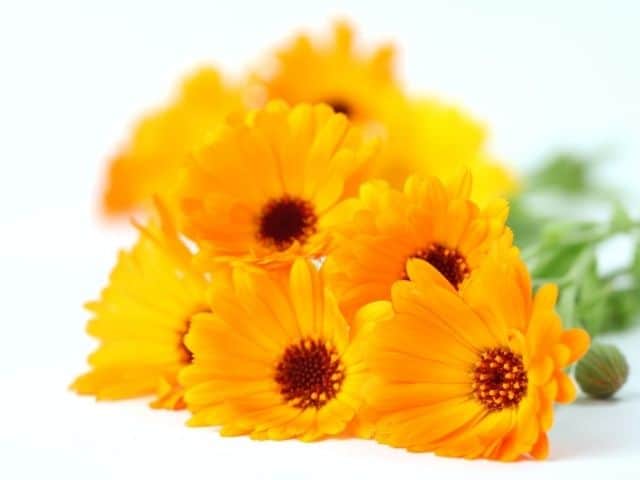
Pot Marigold knew as Ruddles, Common Marigold, Scotch Marigold. It is a flowering plant. These plants are herbaceous perennials.
They can grow up to thirty-one inches long. They grow in warmer climates as an annual flower. Their stems are hairy.
Pot Marigold is an essential medicine for folk healing and skin treatment.
Other than these benefits, this plant has some disadvantages for our guinea pigs, as they are toxic to our guinea pigs. They may cause mild irritation and gastrointestinal problems, and they also produce a milky sap, which irritates the skin of our guinea pigs.
Geraniums
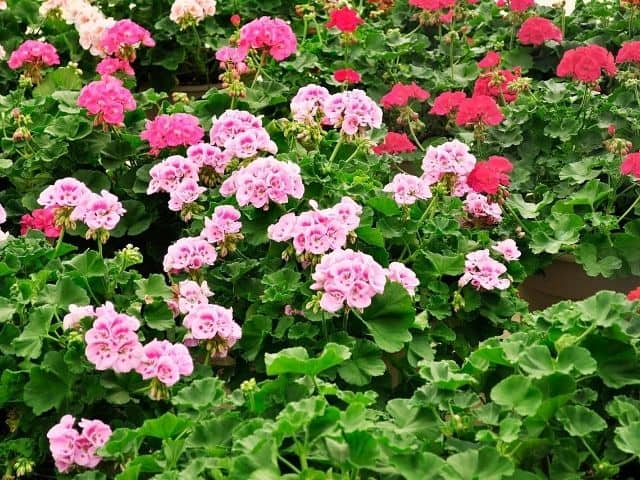
Geraniums are beautiful plants with a soothing fragrance. It has gorgeous flowers and fancy leaves that make them attractive.
They are annual garden plants, and also they can be hanged in baskets. Geraniums mainly grow in the garden, but you can also grow them indoors. They are originated from South Africa.
Geraniums are bad for guinea pigs to consume. It contains chemicals like geraniol and linalool. These toxic components can cause skin irritation and diarrhea to guinea pigs.
Wax Begonia
Wax Begonia are perennial plants. It is also known as fibrous begonias. It comes is mainly three colors, such as white, pink, and red blossoms.
Wax Begonia can grow in the garden, and also you can grow them at a pot. They require full sunlight to grow properly, and they like warm temperatures.
Despite their beautiful look, they can be surprisingly toxic to guinea pigs. These plants can cause swelling or redness around your guinea pig’s mouth, and also guinea pigs can face swallowing issues after consuming this plant.
Wormwood
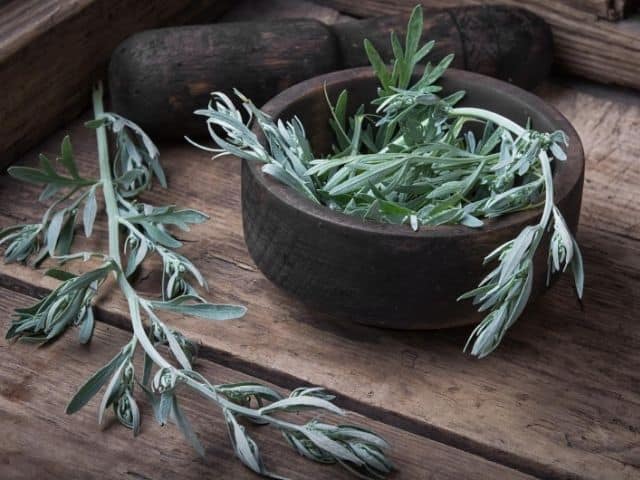
Wormwood is a herbaceous perennial plant. These plants are native to Eurasia, North Africa, Canada, and North U.S.A.
It has fibrous roots, and it can grow up to two feet to three feet tall. The leaves of this plant are colored in greenish-grey above and white in below.
Wormwood is used for flavoring some wines and spirits, and it is also used for dyspepsia. Other than these, this plant contains thujone.
Thujone is responsible for many health problems to guinea pigs, such as muscle breakdown, kidney failure, restlessness, stomach cramps.
So it will be highly appreciated if you keep your guinea pigs away from this plant
Snapdragon
These plants are known as Snapdragon because their flowers look like a dragon when it opens and closes.
They are native to Europe, U.S.A, North Africa. Its Scientific name is Antirrhinum majus. These flowers are wonderful as they are blue. They are mid-sized plants as it can grow up to three feet long.
Generally, Snapdragons are not harmful. Guinea pigs will not face any problem if they eat this plant, but it creates some issues when it is get effected by fungus and viruses.
If guinea pigs eat these plants when they are affected by fungus and viruses, it can lead to serious health issues.
Peppers
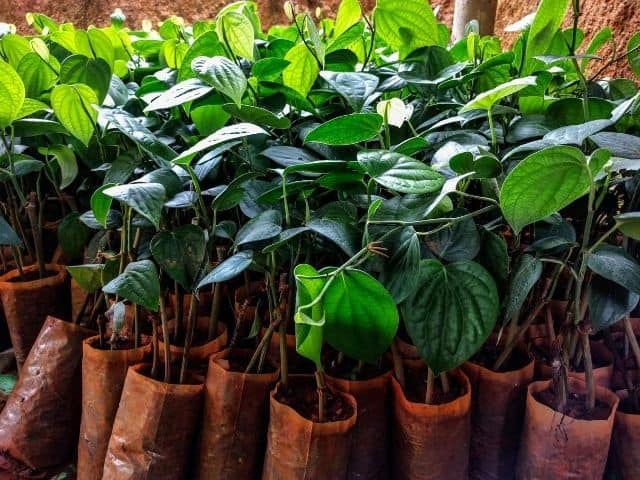
Pepper plant is a woody-stemmed climbing plant. It is famous for its fruit known as a peppercorn, that is used for spicing and seasoning.
A fully mature pepper plant can grow up to five millimeters. They are native to Asia.
These plants are not suitable for guinea pigs to consume. Pepper plants contain solanium pseudocapsicum that belongs to the solanaceous family.
Solanine can cause numerous health problems to guinea pigs, such as nausea, diarrhea, stomach cramps, burning of the throat, and many other health problems.
Salvia

Salvia, also known as Salvia Divinorum, is a plant that belongs to the mint family. It is native to Southern Mexico and parts of Central and South America.
Salvia is a shrub, and they are perennial and aromatic. The leaves of this plant are arranged oppositely along with the stems. Stems are square of this plant.
The beautiful colors of this plant come in white, yellow, blue, and red. Their flowers are shaped as tabular. They have various street names such as-
- Diviner’s Sage
- Maria Pastora
- Ska Pastora
- Hierba Maria
- Sally-D
- Magic Mint
- Shepherdess’s Herb
- Leaf o Prophecy
- Lady Salvia
- Lady Sally
- Sage of the Seers
- Purple Sticky
- The Female
- Incense Sticky
Salvia has some side effects when it comes to our guinea pigs. They contain hallucinogens that can cause visual distortions of bright lights and a sense of uneasiness.
They also cause health problems to guinea pigs, such as nausea, dizziness, immobility, etc.
Catnip

Catnip is also known as catwort and catmint. They belong to the Lamiaceae family. Their scientific name is Nepeta Cataria. They are native to Southern and Eastern Europe, the Middle East, Central Asia, and China.
Catnip has a short life span. They are herbaceous and perennial. It can grow up to twenty to forty inches tall.
They are used for flavoring sauces, soups, and stews. Catnip leaves are used for herbal teas. It is beneficial for interstitial cramps and digestion. Catnip can be harmful to guinea pigs, as they can lead to nausea and headaches.
Cleome
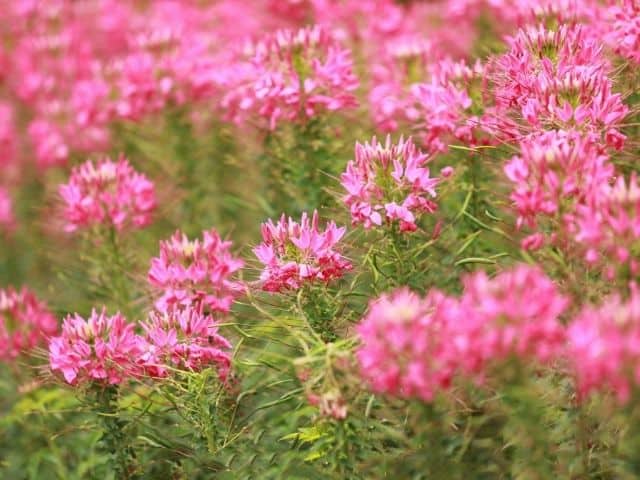
Cleome is a flowering plant and belongs to the cleomaceae family. It is also known as spider flower, spider plant, spider weed, bee plant.
It is an annual flower. They are native to North America. Cleome can grow up to one to five feet tall and one to two feet wide. They generally grow in the garden.
Cleome is used as food, medicine. Its productive medicinal uses are for bronchitis and pain-relieving purposes.
Just like their excellent advantages, they also have some disadvantages to guinea pigs like they can create swelling in the guinea pig’s stomach.
Globe Thistle

Globe thistle is also known as excellent globe thistle or pale globe thistle. Its scientific name is Echinops sphaerocephalus, and it belongs to the sunflower family.
Globe thistle is an herbaceous perennial plant. It can grow up to twenty to forty inches tall. Its stems are hairy, gray, and wrinkled. Its leaves are sharp, soft, and green in color.
They have spiky flowers that can live up to eight weeks. Their blooming time is mainly summer, and they come in blue, purple, and white color.
This plant is consists of elements that are harmful to guinea pigs. They can cause health problems to guinea pigs. They can cause health problems like stomach pain, diarrhea, kidney-related problems, bladder stones, and effect urinary tract.
Guinea pig ate poisonous plant
Guinea pigs like to forage ad eat. If they eat any poisonous plant during foraging, that is a serious problem as this can lead to fatal health problems.
If you notice any unusual behavior or sign on poisoning, then first you need to call your vet or take them to the veterinary clinic.
Let the vet examine your guinea pig properly so that they can find the poisoning reason, or if you are aware of the poisonous plant, then tell that to the vet so that they can start treatment immediately.
After the necessary check-ups, always remember to feed your guinea pigs, all medicines prescribed by the vet.
Signs of guinea pig poisoning
When a guinea pig eats any poisonous plant, certain discomfort will start arising in their body.
Always be aware of following those discomfort signs.
Always be cautious about the signs of guinea pigs when they are not feeling well. Let’s discuss the signs below:
- Pain in the abdomen
- Internal bleeding
- External bleeding
- Showing depressed behavior like going away from you
- Bloating
- Diarrhea
- Constipation problem or improper bowel movement
- Respiratory problems
- Redness and swelling in the mouth
- Running away from food
- Slow heartbeat
- Lower body temperature
- Unconsciousness
- Weakness
If you notice any of these sign, you must reach out to a vet immediately.
Sources: ASPCA, Poisonpethelpline, Houseplants toxic for pets, Flowers toxic for pets.
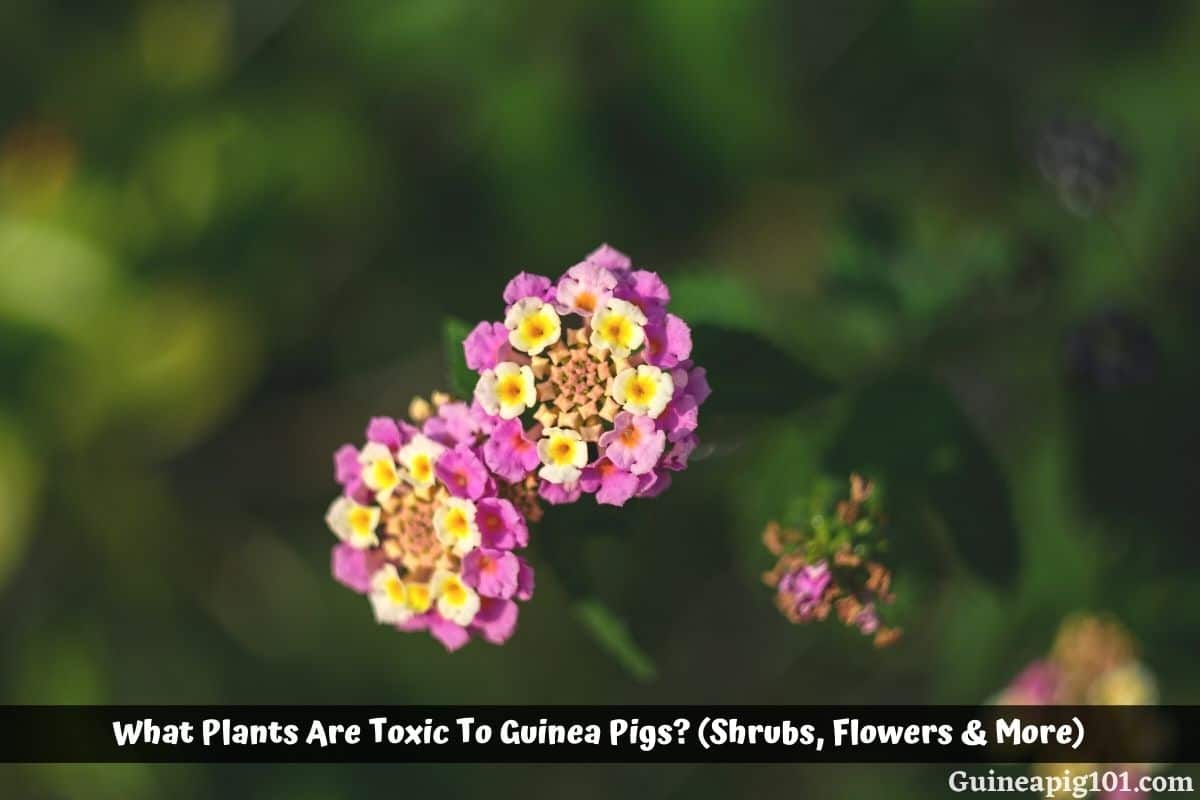
Brian Walford
Sunday 24th of November 2024
We trimmed our lillypilly hedge with some trimmings landing in the guinea pigs' pen. Would these trimmings be harmful for the guinea pig to eat?
Brian
mollie
Tuesday 18th of July 2023
Is stevia bad for Guinea pigs?